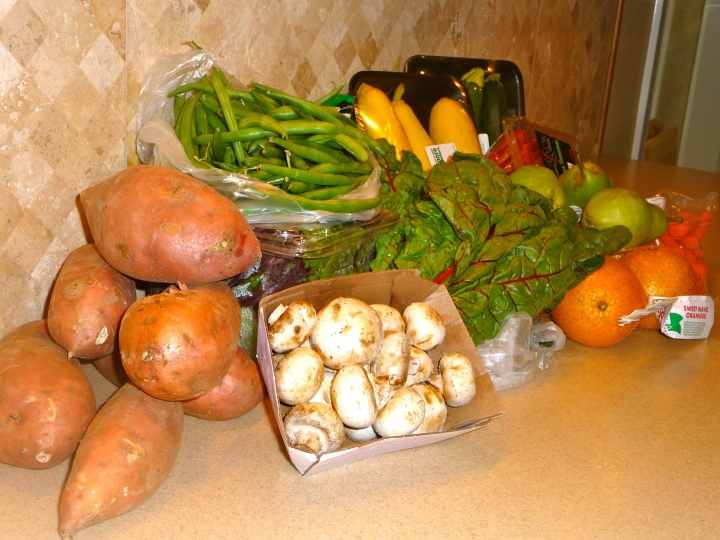From the time we’re young, society feeds us a steady diet of lies—find the right man and you’ll be satisfied, attain the right figure and you’ll be beautiful, wear the right clothes and you’ll be accepted. So we try it, only to discover there’s still this quiet ache.
Like a boat without an anchor, our hearts drift restlessly on a constant quest for fulfillment. And boy does the world have a lot of suggestions for where we might find fulfillment. I’m not much of a magazine reader, but I recently picked up a magazine promising to divulge how Jennifer Hudson “lives it up at Christmas without putting on a pound.” Inadvertently, I stumbled upon an article entitled “12 Things We Learned about Love in 2012.” The list was nothing short of devastating, boosting the pornographic novel Fifty Shades of Grey and the male-strip-club movie Magic Mike. Really? These are the things we learned about love? But the sad reality is yes, these are the tutors shaping the hearts and minds of countless women.
And it’s all counterfeit. We desire intimacy, and we’re offered lust. We long for significance, and we’re handed a J Crew catalogue. We want a Hero, and the world suggests 007. Speaking of heroes, the other night I watched The Bourne Legacy with my husband. One particular scene had me especially hooked. In it the female doctor is running from the police. She escapes into a narrow alley, only to find a police officer on either side. Meanwhile, her partner, the medically enhanced super-duper spy is also running from police on the rooftops. Just as you think it’s all over for the doctor, her partner leaps from a roof, flies down this tight alley, and saves her. Ridiculous, sure, but I loved it! I always love that image of the mighty hero rescuing the girl. I think a lot of women do. You know why I think it appeals to us? Because it’s a dim reflection of a true story.
The next morning, after watching the movie, we were singing at church when a particular line from the song struck me: “The King of Glory rescued me.” Unbidden, the image from the movie flashed through my mind. With it came the joyous thought—there really is a Hero! The world may offer an array of counterfeits, but there is a real thing in existence. There is a Hero who longs to be deeply intimate with you, who has the power to bestow true significance, and who makes the Hulk look like a girl scout. He is the ultimate leader, stronger than any super-spy, and fiercer than any warrior.
Listen to the heroic imagery of Psalm 18, as David cries out to God for help. With fire from His mouth and anger that makes the mountains tremble, God flies swiftly on the wings of the wind, His voice thundering like hailstones. He battles with arrows and lightning, until the channels of the sea are seen and the foundations of the world laid bare at His rebuke. And then David declares, “He sent from on high, He took me; He drew me out of many waters. He rescued me from my strong enemy…for they were too mighty for me.” Talk about a rescue! Talk about a Hero.
Why do women wander? Because our souls were made for this Hero, and nothing less can satisfy. As a Christian, do I still feel the temptation to wander aimlessly? Absolutely. It’s why I’m writing. But I take heart because I also know the truth. That restless stirring in my heart is not the need for a new pair of skinny jeans, or a few more dates with my husband. It is my soul’s soft reminder that I was made for Christ. It is my Savior’s invitation to come and be satisfied.
You May Also Like:



![sad-woman-looking-out-dark-window[1]](https://lovingmylot.files.wordpress.com/2013/01/sad-woman-looking-out-dark-window1.jpg?w=720)




![lance26_custom-00442ce358537a23e223fc698ffa4f305cc2f378-s6-c10[1]](https://lovingmylot.files.wordpress.com/2013/01/lance26_custom-00442ce358537a23e223fc698ffa4f305cc2f378-s6-c101.jpg?w=720&h=779)



![CrossFitRoots_BokChoy[1]](https://lovingmylot.files.wordpress.com/2013/01/crossfitroots_bokchoy1.jpg?w=132&h=150)
![roasted-brussels-sprouts-fd-lg-1[1]](https://lovingmylot.files.wordpress.com/2013/01/roasted-brussels-sprouts-fd-lg-11.jpg?w=150&h=117)
![swisschard-bright-lights-from-all-natural-mama-blog-shade-plants-blog[1]](https://lovingmylot.files.wordpress.com/2013/01/swisschard-bright-lights-from-all-natural-mama-blog-shade-plants-blog1.jpg?w=120&h=150)
![collard-greens[1]](https://lovingmylot.files.wordpress.com/2013/01/collard-greens1.jpg?w=150&h=112)
![photo70[1]](https://lovingmylot.files.wordpress.com/2013/01/photo701.jpg?w=114&h=150)
![kool-kale[1]](https://lovingmylot.files.wordpress.com/2013/01/kool-kale1.jpg?w=150&h=100)
![Mustard_Greens[1]](https://lovingmylot.files.wordpress.com/2013/01/mustard_greens1.jpg?w=150&h=150)
![turnip-greens[1]](https://lovingmylot.files.wordpress.com/2013/01/turnip-greens1.jpg?w=150&h=117)
![napa_cabbage[1]](https://lovingmylot.files.wordpress.com/2013/01/napa_cabbage1.jpg?w=129&h=150)
![rutabaga[1]](https://lovingmylot.files.wordpress.com/2013/01/rutabaga1.jpg?w=150&h=138)